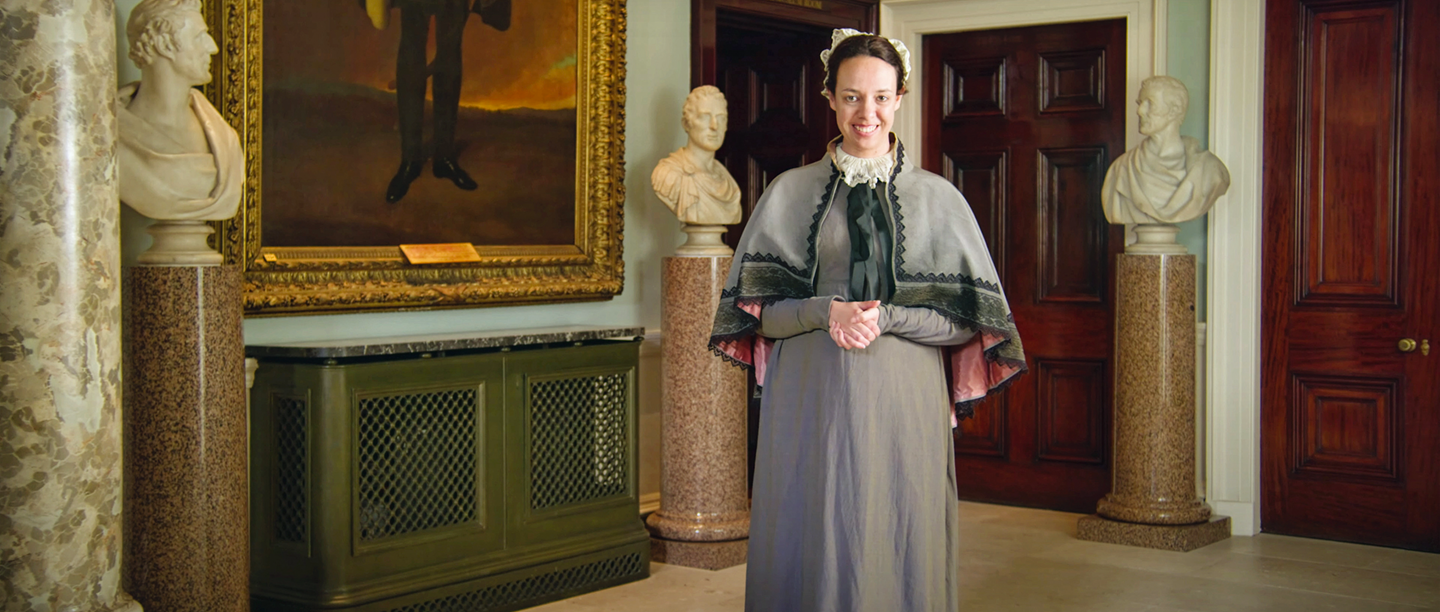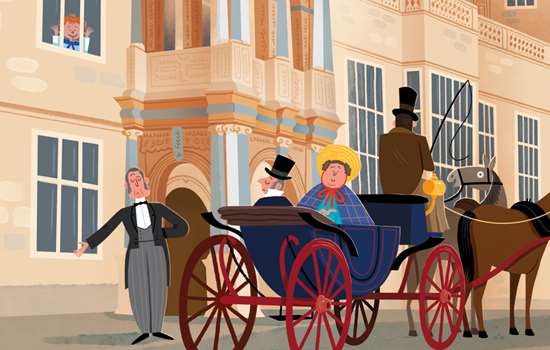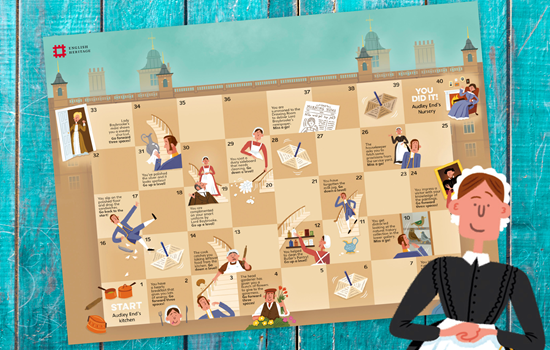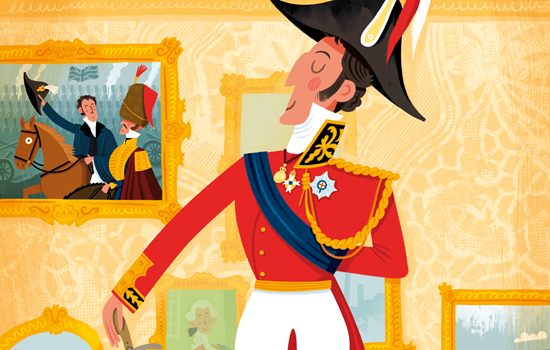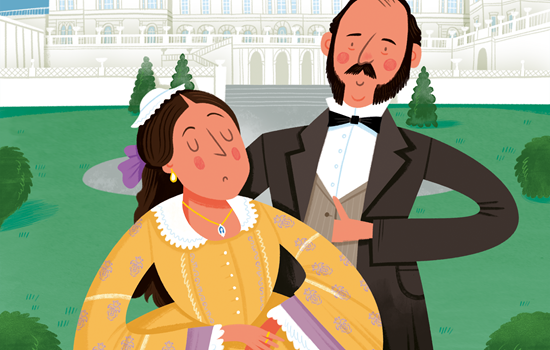Video: homes through history – Apsley House
Step back in time to meet the housekeeper at Apsley House, Matilda Cross. Find out about life at the Duke of Wellington’s majestic London home – and what the household staff have to do behind the scenes.
Find out the answer to questions from young English Heritage Members on what Matilda's job involves, how she prepares for extravagant banquets, and the Duke of Wellington’s favourite ice cream flavour!
Karmjeet: Who owns this house?
His Grace, the Duke of Wellington (pictured), has owned this house since 1817. Since then, His Grace has done extensive refurbishment work, including the dining room, which can seat up to 45 people. His Grace’s success at the Battle of Waterloo, where he led our troops to victory against Napoleon, was so significant that every year we hold a grand banquet to celebrate on the evening of 18 June.
Aden: What does a housekeeper do?
I work behind the scenes of the house. I manage the household staff, and keep the kitchen well stocked for the chef. I rarely do any of the cleaning myself but I manage all of the staff that do, including four housemaids and a head housemaid. Today we are preparing for a banquet so everyone is very busy. I mostly work in the service area of the house. I will meet with the Duchess to discuss what needs to be ordered and to see if she has any special instructions for me. I also manage the household budget to ensure we have food for the banquets as well as the normal weekly meals.
Laaibah: What is a banquet and how many people come?
A banquet is a very large, formal meal. Guests will normally attend in their finest clothes and make speeches. His Grace holds one every year to celebrate his victory at the Battle of Waterloo (pictured). The banquets are attended by military colleagues of His Grace, politicians and royalty. It’s very busy for the serving staff and I rarely get a break.
Khalaf : What is the Duke of Wellington’s favourite food?
His Grace has very plain tastes, like mutton and potatoes, from years on campaign. As a soldier, he would take bread and a hard-boiled egg. But His Grace loves to entertain and so is expected to have fashionable dinners. It requires a very special chef to make all of these dishes and we have a gentleman all the way from France. Monsieur Louis Auvrery makes wonderful meals for His Grace’s guests. Everything is served à la Française, which means that various sweet and savoury dishes are brought to the table at the same time so that guests can help themselves and eat at their leisure. His Grace enjoys everything that the chef serves but his favourite is Parmesan ice cream.
Exploring Apsley House
Apsley House was designed and built by the trendy architect Robert Adam in the 1770s, and once had the impressive (and easy to remember) address of ‘Number 1, London’. It was bought by the Duke of Wellington in 1817, two years after his great victory over Napoleon’s French army at the Battle of Waterloo. After paying £40,000 in today’s money for the house, the duke transformed it into a palatial home, and filled it with works of art and other gifts from rulers across Europe.
Wellington made the house much bigger so that it had room for him to entertain all the guests that came to visit him. He added a huge dining room, and new bedrooms and dressing rooms. After Wellington became prime minister in 1828, he made even more changes, adding a new staircase and a lavish room called the Waterloo Gallery. Following his death in 1852, the house was opened to the public. A Museum Room was created to display Wellington’s silver trophies, military memorabilia and gifts of porcelain, and these can still be seen by visitors today.
Make your own mini model of Apsley House
Now you can make your very own model of Apsley House. Ask an adult to download our template and print it out for you, then follow the instructions below to build a mini version of this grand London home.
Once you’ve completed it, put your model on display and imagine yourself looking after the huge house like the housekeeper Matilda Cross!
Download your templatesHow to build your model of Apsley House
You will need:
- Print-outs of the model house templates
- Scissors
- Glue or double-sided sticky tape
- Thin card (optional)
-
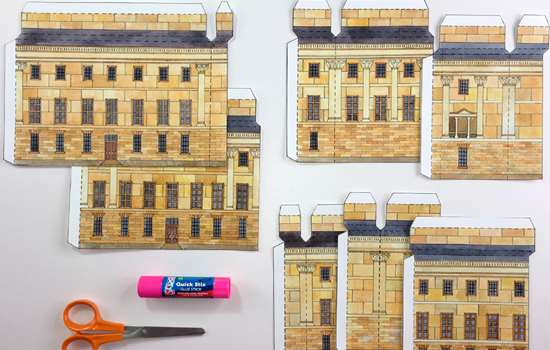
Step 1
Download your exclusive templates, print them out and cut them out using a pair of scissors (or ask a grown-up to help you). If you want to make the pieces stronger you can glue them on to thin card.
-
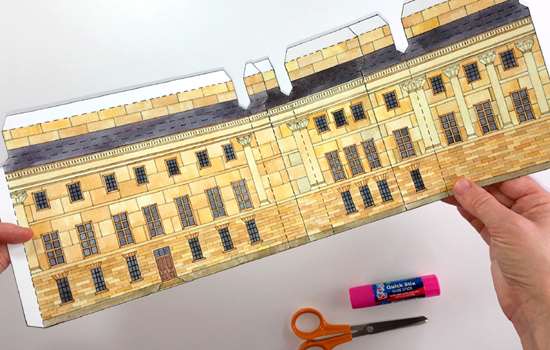
Step 2
Before adding the roof, you need to join the walls together. Begin with the front of the building. Line up and glue pieces A, B and C together, in that order.
-
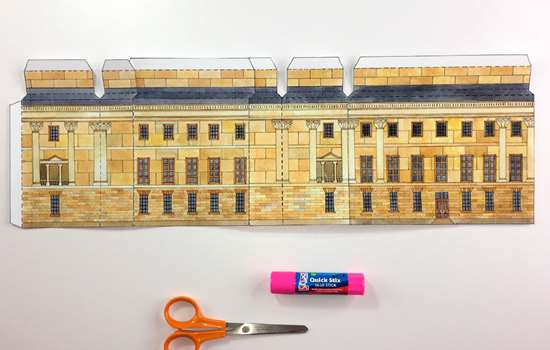
Step 3
Next glue the three north walls, D, E and F, together, in that order. Glue west wall, G, on to the right of F.
-
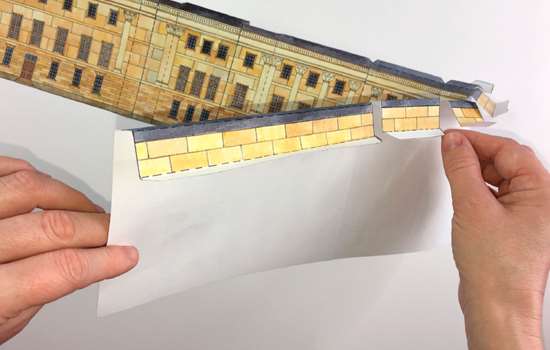
Step 4
Fold down the tops of each of the pieces you’ve just glued, and fold the tabs up to create a horizontal platform. This is where the roof will sit. Some of the tabs will overlap – don’t worry! Once the walls are folded, it will fit perfectly.
-
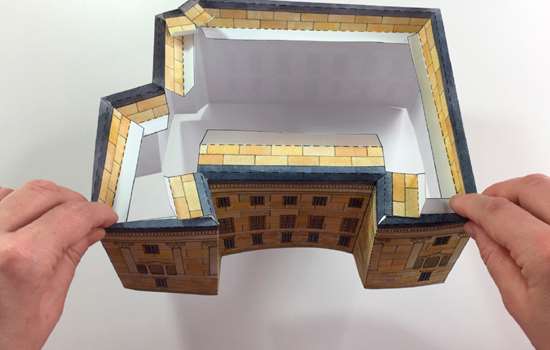
Step 5
Fold along the dotted lines to create the shape of your building. Use the shape of the roof base, piece H, to check the shape of your walls, then glue the west wall, G, to the south wall, A, to complete the shape of the house.
-

Step 6
Glue the roof base, H, on to the platform created in step 4. You’ll notice your model becomes a lot stronger once the roof is added.
-
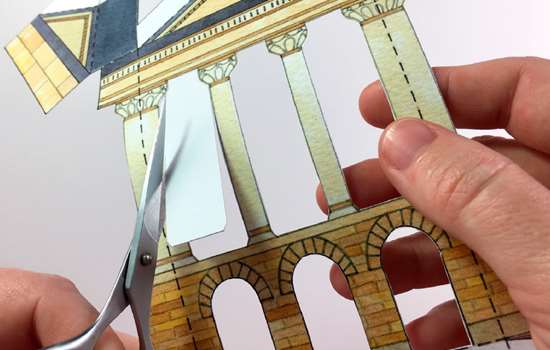
Step 7
Carefully cut out the portico, including the gaps in between the pillars. If you have a pair of nail scissors, these are ideal for getting in these small gaps – or ask a grown-up to help you.
-
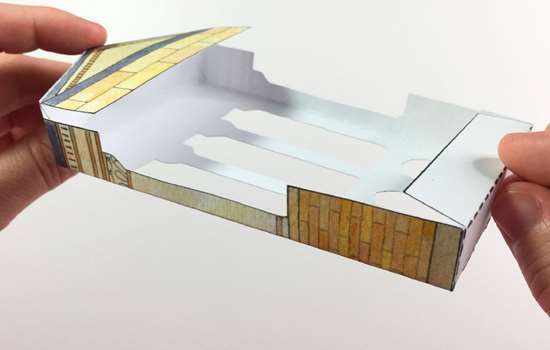
Step 8
Fold the portico along the dotted lines, then glue the tabs on the roof and base together.
-
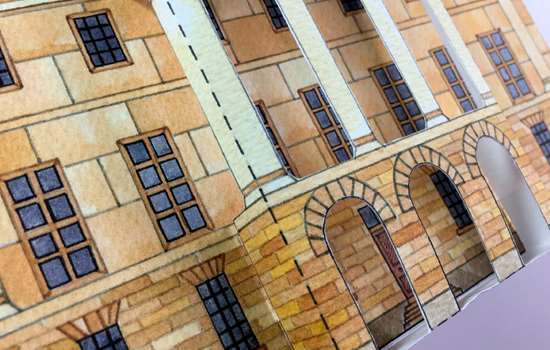
Step 9
Hook the roof part of the portico over the edge of the roof on the front of your building. Fold the bottom tab on the portico under and up inside the building – make sure you can see the door through the middle pillars, then glue the bottom tab inside to secure it.
-
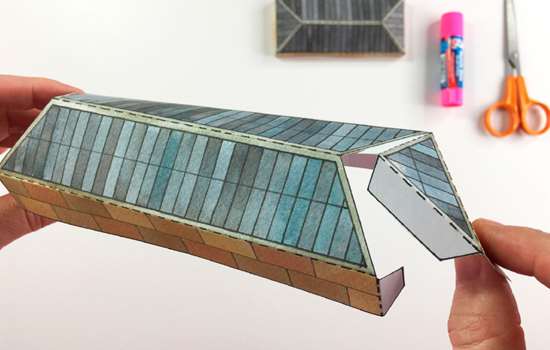
Step 10
Fold K and L to create two roofs. Glue them to the top of Apsley House by adding the glue along the side. Match the shape of the roofs with the roof plan.
-

Step 11
Fold the roof, M, together and glue to secure it. Add this to the east side of the building by applying glue to the sides, matching up with the section labelled M.
-
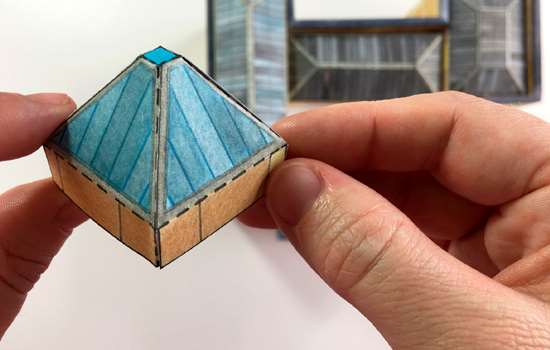
Step 12
Fold the small square roof, N, together and add it to the square on the roof plan.
-
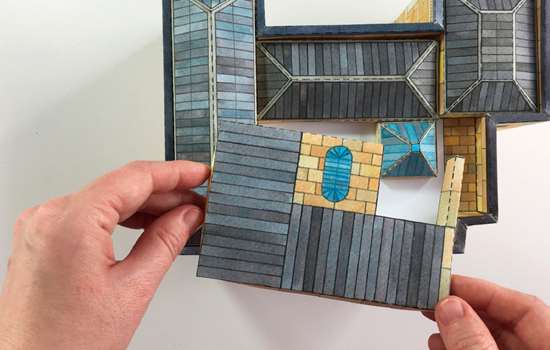
Step 13
Score along the dotted lines of the final roof section, O, and fold the sides down. Put glue on the small tabs to secure it together. Part O fits around the square roof you made in step 12. Glue this piece in place on top of your building to complete your model of Apsley House!
More to explore

